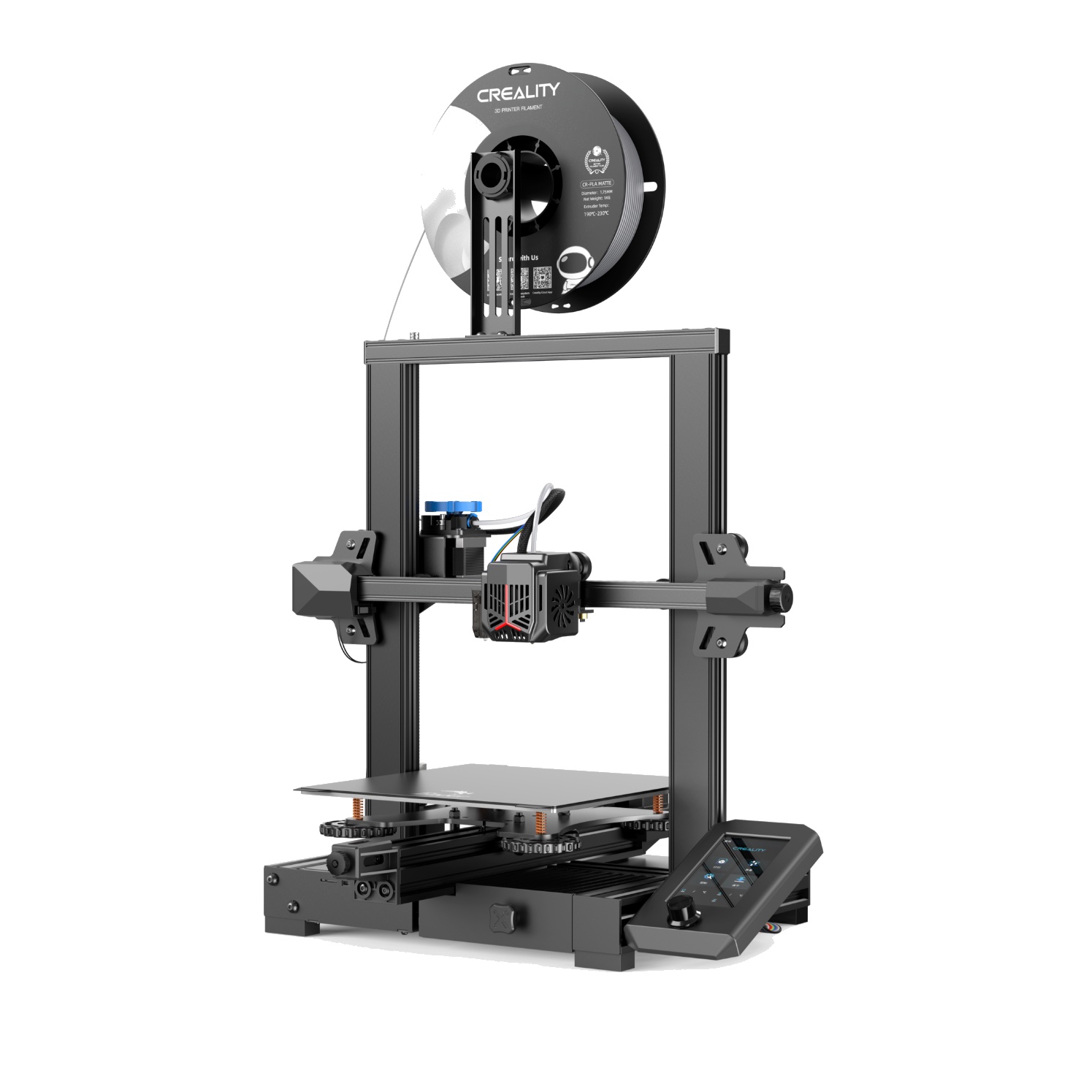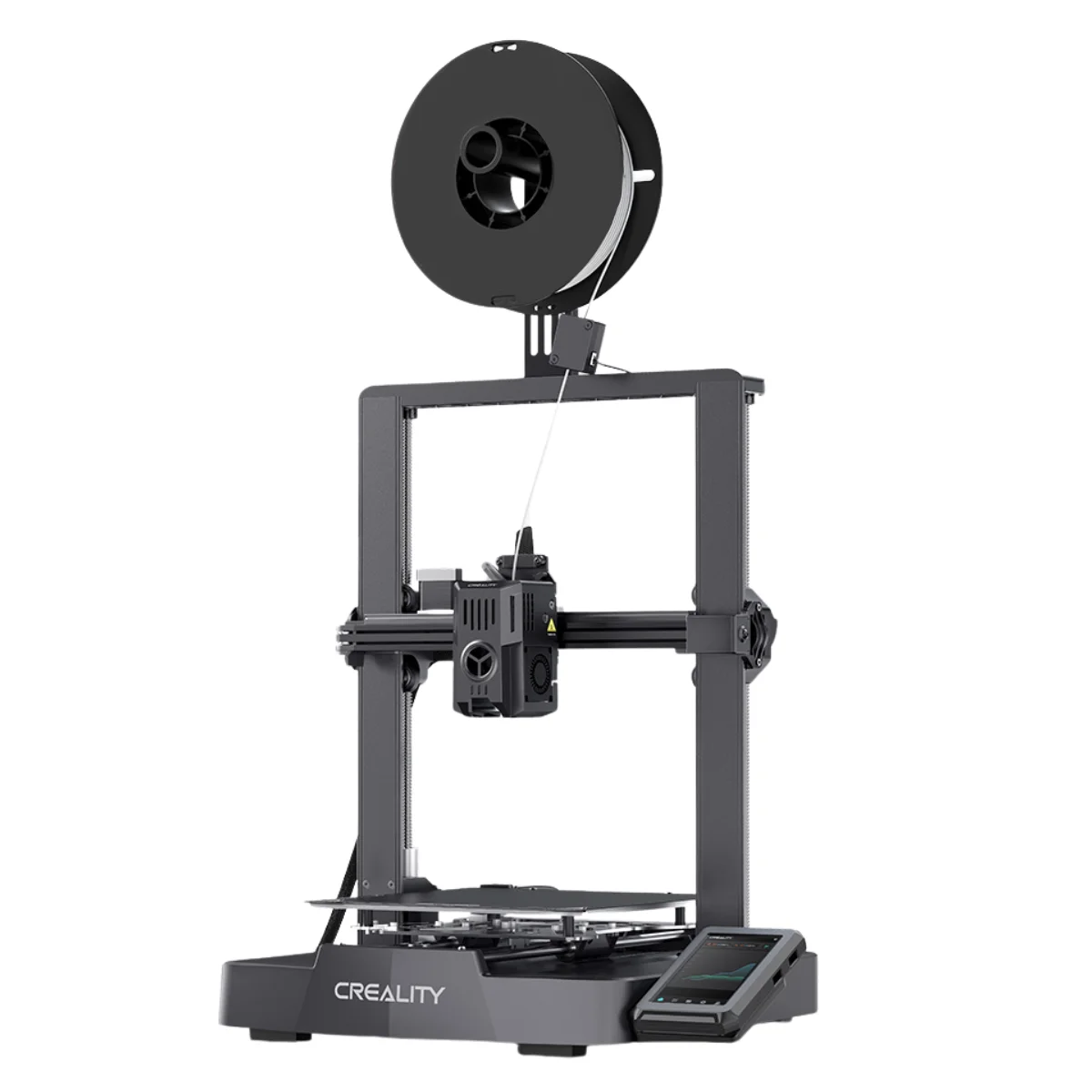Compare Ender 3 V2 Neo vs Ender 3 V3 KE
Comparison between the best 3D printers
Choose the best 3D printer at the best price. The cheapest 3D printers are here.
Buy a 3D printer here with 3D Fila.
 |
 |
|
| Model | Ender 3 V2 Neo[BUY Ender 3 V2 Neo] |
Ender 3 V3 KE[BUY Ender 3 V3 KE] |
| Printing Material | Filament | Filament |
| Buy Filament for Creality 3D Ender 3 V2 Neo | Buy Filament forCreality Ender 3 V3 KE | |
| Estimated price | $310,00 | $279,00 |
| Manufacturer | Creality 3D | Creality |
| Release Year | 2022 | 2023 |
| Print Volume [mm] | 220x220x250 | 220x220x240 |
| Printer Size [mm] | 438x424x472 | 433x366x490 |
| Weight [kg] | 9,8 | 7,8 |
| Power Loss Recovery | YES | YES |
| Enclosed printer | NO | NO |
| Bed Leveling | Automatic | Automatic |
| Filament End Sensor | YES | YES |
| Bed type | Heated | Heated |
| Power supply system | Bowden | Direct Drive |
| Standard nozzle | 0,4 | 0,4 |
| Maximum Nozzle Temperature [°C] | 260 | 300 |
| Maximum Bed Temperature [°C] | 100 | 100 |
| Maximum printing speed [mm/s] | 80 | 500 |
| Filament holder | YES | YES |
| Camera for supervision | NO | NO |
| Recommended filaments | PLA, PETG | PLA, PETG e TPU (95A+), ASA |
| Recommended slicers | Cura, Simplify, Slic3r, IdeaMaker | Creality Print, Cura 5.0 ou superior, Prusa Slicer, Orca |
| Maximum Resolution [mm] | 0,1 | 0,1 |
| Processor | 4.2.2 mainboard | 32-bit Silenciosa |
| Display | Display touchscreen 4,3'' | Touchscreen 4,3'' |
| Power Supply | 350 W | |
| Connectivity | SD / USB | USB drive, LAN, Creality Cloud APP |
| Operating systems | Windows, Mac, Linux | Windows, Linux, Macbook |
| Date of registration in the system | 2022-12-09 | 2024-03-06 |
| Release date | 2022 | 2023 |
| Extra features | The Ender 3 V2 Neo printer stands out for its automatic bed leveling with the CR Touch system, ensuring high-quality initial layers. It features an all-metal Bowden extruder for increased durability and improved filament handling. Its flexible, PC-coated magnetic build plate makes it easy to remove prints and is durable and easy to clean. It also includes a new user interface with model preview and an updated gantry design. The Ender 3 V2 Neo maintains the same build volume and temperatures as the previous version, supporting popular filaments such as PLA and ABS. It features a quiet 32-bit mainboard and additional features such as a filament sensor, print recovery, simple 3-step assembly, an integrated toolbox, and belt tensioners. | The Ender 3 V3 KE, an advancement in the Ender line, achieves print speeds of up to 500mm/s with its touchscreen and WiFi connectivity. Although it has a slightly smaller print area than the SE model, it makes up for it with superior print quality. Its robust design, high-quality components, and intuitive wireless control are appreciated, although Creality's mobile app lacks practicality and does not have a closed system. It stands out for its linear track on the X-axis for stability at high speeds and the hotend that supports up to 300°C, ideal for high-temperature filaments. |
| Support for multiple colors and materials (AMS and CFS) | NO | NO |
Notes * |
||
| Cost-benefit | 6 / 10 | 7 / 10 |
| Hardware | 2.4 / 10 | 2.8 / 10 |
| Tela | . | . |
| Print volume | 3 / 10 | 3 / 10 |
| Performance | 0 / 10 | 4 / 10 |
| [BUY Ender 3 V2 Neo] | [BUY Ender 3 V3 KE] |
Conclusion |
| In comparing the Ender 3 V2 Neo and the Ender 3 V3 KE 3D printers, we can observe several key distinctions that could influence a buyer's decision. The Ender 3 V2 Neo, while slightly more expensive, offers a solid balance of features suitable for a range of users, thanks to its reliable performance and robust build quality. It includes essential features such as automatic bed leveling and a heated bed, making it user-friendly, especially for beginners. On the other hand, the Ender 3 V3 KE, released more recently, presents a compelling case for those seeking higher printing speeds and the capability to work with a broader range of materials. Its direct drive system and advanced hotend allow for greater flexibility in filament choice, while its ability to handle fast print speeds positions it well for those who prioritize efficiency. When it comes to cost-effectiveness, the Ender 3 V3 KE slightly leads, offering superior performance for its price point despite having a marginally smaller build volume. Both models share essential features like a heated bed, filament sensors, and automatic bed leveling, but the V3 KE’s enhanced speed and material versatility grant it a higher score in performance. Ultimately, the choice between the two models may come down to specific user needs—whether one prioritizes reliability and usability (Ender 3 V2 Neo) or speed and material capabilities (Ender 3 V3 KE). Buyers should weigh these features against their budget and intended use to determine which printer offers the best value for their needs. |

